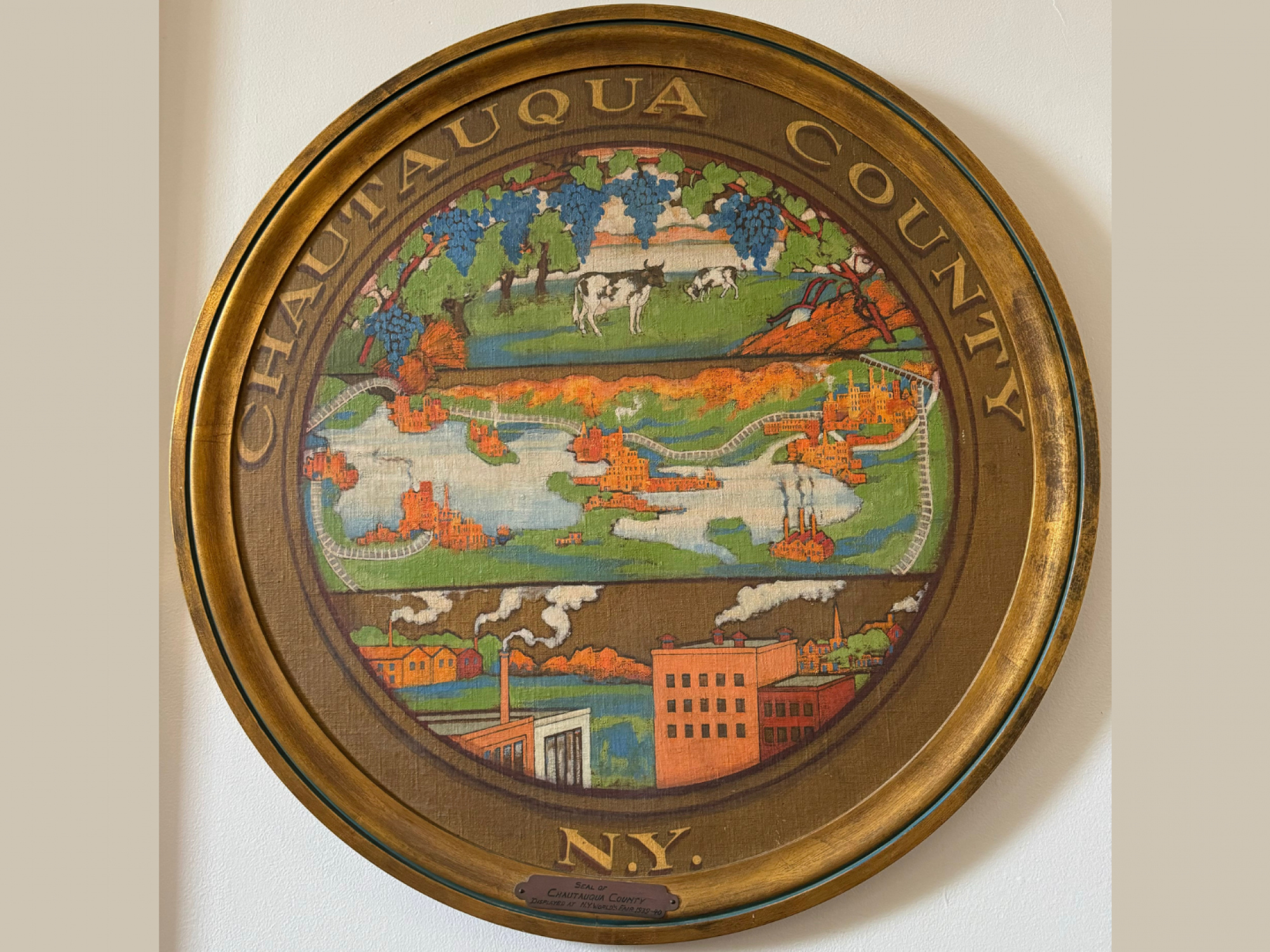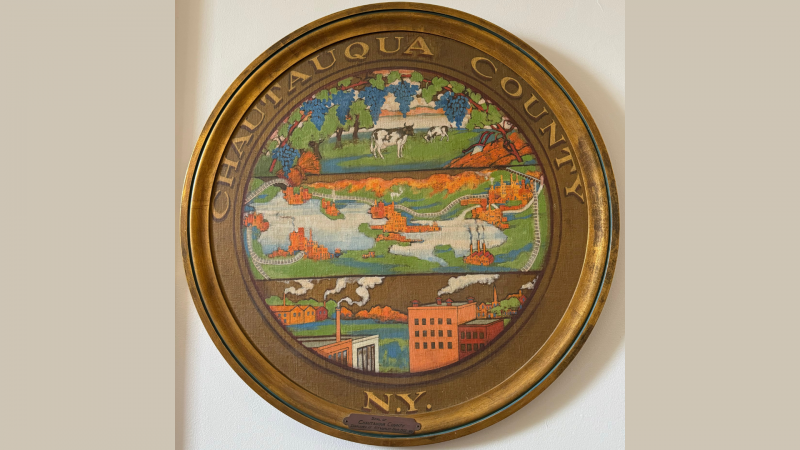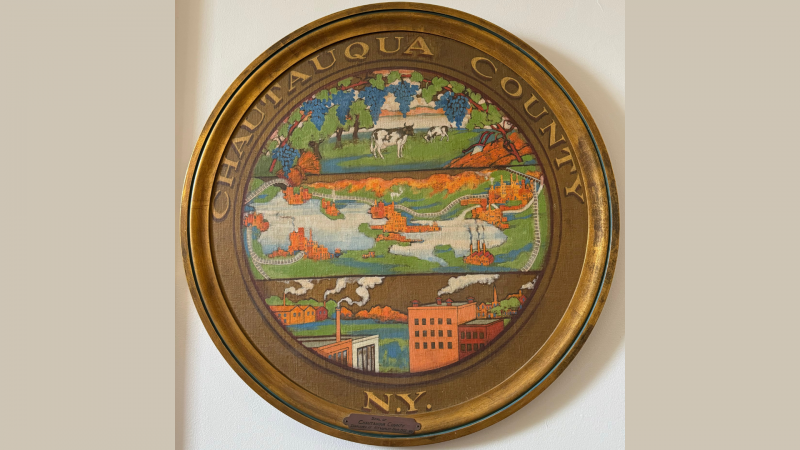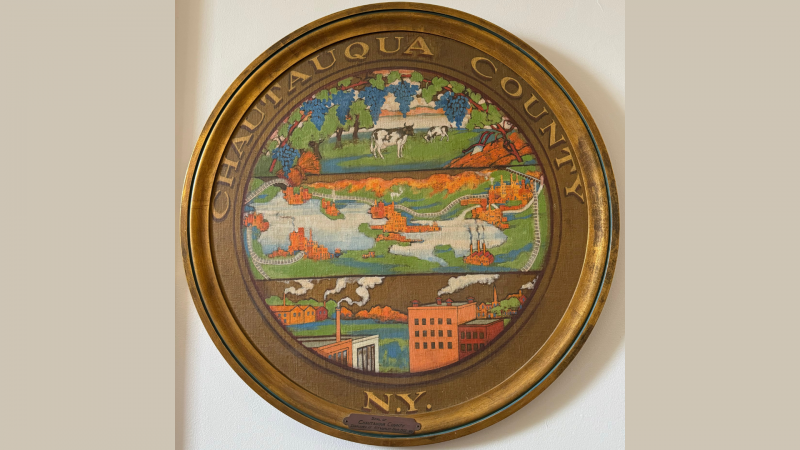
By Norman Carlson, Chautauqua County Historian
As we move through the early days of September, it's fascinating to look back at the significant moments that have shaped Chautauqua County's rich history. From the dedication of landmarks to memorable events that have left their mark, these stories remind us of our community's enduring legacy. Here’s a look at what happened this week in history:
September 1, 1886: A log cabin was dedicated at Jamestown's Marvin Park, the new location for the Chautauqua County Fair Ground. This dedication marked the beginning of a longstanding tradition in the area.
September 1, 1886: A consolidation vote took place between Ashville (Harmony #3) and Boomertown (Busti #13) schools, one of the most bitter disputes in Busti school history. The results of this vote would shape the educational landscape of the region.
September 1, 1887: Dunkirk saw the start of free door-to-door mail delivery, with letters being delivered twice a day. This service was a major convenience for residents and a sign of the growing infrastructure.
September 1, 1929: The steamboat City of Buffalo was deliberately burned as a spectacle off Celoron Park, drawing crowds and marking the end of an era for the once-thriving steamboat industry.
September 1, 1932: The last tent, traveling, or circuit Chautauqua, a cultural and educational movement, closed in New England. The small "c" chautauquas were modeled after the larger Chautauqua Institution, and their end marked a significant cultural shift.
September 1, 1933: Theodore Sundell of Celoron experienced a terrifying encounter when he was bitten by a muskellunge at Sherman's Bay. He nearly bled to death, highlighting the dangers of local wildlife.
September 1, 1936: The compulsory school attendance age in New York State was raised from 14 to 16, reflecting a broader commitment to education and child welfare.
September 1, 1955: New York State implemented mandatory auto inspections, ensuring that vehicles met safety standards and reducing the risk of accidents on the road.
September 1, 1956: Grandin Milling Company in Jamestown went out of business. This company was the successor to James Prendergast's mill, a foundational part of the community's early industry.
September 1, 1968: Chautauqua County introduced a 3% county sales tax on top of the state’s 4% tax, which had been in effect for two years, marking a significant change in the county's financial landscape.
September 1, 1996: Saint Peter and Paul Catholic School in Jamestown was renamed Holy Family, continuing its tradition of providing education under a new name.
September 1, 1998: A significant event occurred at the Busti Firemen's Grounds, where 3,000 marijuana plants were burned, reflecting ongoing efforts to combat illegal drug activity in the area.
September 1, 2002: The sale of WJTN, a prominent Jamestown radio station, to out-of-town owners was finalized, marking the end of an era for local broadcasting.
September 1, 2014: The last games of the Jamestown Jammers baseball team were played at Diethrick Park, bringing an end to a beloved sports tradition in the community.
September 2, 1803: Chautauqua County saw its first funeral and first sermon in Westfield, held for Andrew McHenry, marking a somber yet important moment in the county’s early history.
September 2, 1847: The famous circus man, Dan Rice, made his first appearance in Jamestown, bringing entertainment and wonder to the community.
September 2, 1852: A tragic boat accident on Cassadaga Lake resulted in the drowning of eight young people, a heart-wrenching event that left a lasting impact on the community.
September 2, 1897: Jamestown became the center of agricultural commerce when 500 calves were shipped from the town to Iowa, reflecting the area's role in the broader economy.
September 2, 1898: The first performance at Samuels' Opera House in Jamestown took place, adding a new venue for culture and the arts in the community.
September 2, 1901: The Jamestown Morning Post published its first issue, becoming an important source of news and information for residents.
September 2, 1905: The first trolley car from Warren arrived in Jamestown, marking a new era of transportation and connectivity for the region.
September 2, 1982: A windstorm recorded at the Jamestown airport reached speeds of 121 mph, a powerful reminder of the area’s vulnerability to natural forces.
September 2, 1988: Jamestown General Hospital closed, ending decades of service to the community and marking a significant shift in local healthcare.
September 3, 1924: Washington Junior High School in Jamestown opened its doors to students, beginning a new chapter in the education of local youth.
September 3, 1932: Vincent Lopez and his Hotel Street Regis Orchestra performed at the Bemus Point Casino, bringing big-city entertainment to the lakeside community.
September 3, 1946: The final issue of the S NEWS ER, a spirit-copied (Ditto process) newspaper for World War II servicemen in Findley Lake, was published, ending a unique chapter in local publishing history.
September 4, 1828: The first St. Paul’s Episcopal Church building in Mayville was consecrated, establishing a place of worship that would serve the community for generations.
September 4, 1846: Raymond and Waring’s Immense Menagerie, a traveling show, exhibited in Fredonia, bringing exotic animals and excitement to the town.
September 4, 1967: The demolition of the long-unused Busti Swedish Covenant Church building began, a poignant moment as the community bid farewell to a piece of its religious heritage.
September 5, 1859: Major repairs and remodeling of the wooden Main Street Bridge in Jamestown were undertaken, an essential project for maintaining the town’s infrastructure.
September 5, 1884: The Sugar Grove Seminary (United Brethren) was dedicated. Though it closed in June 1914, its impact on education in the region was lasting.
September 5, 1996: Five swimmers made history by swimming the length of Chautauqua Lake, a testament to both their endurance and the beauty of the local environment.
September 5, 2002: Classes started in the new Southwestern elementary school on the central campus, marking the beginning of a new era in education for local children.
September 6, 1857: A religious camp meeting at Ellington Centre attracted 5,000 people, illustrating the area’s strong spiritual community.
September 6, 1878: The Frewsburg Cornet Band held their first annual ball in Raskin's Hall, kicking off a tradition of music and celebration.
September 6, 1882: Jumbo the elephant, a star attraction, visited Jamestown, drawing crowds eager to see one of the world’s most famous animals.
September 6, 1898: Jamestown troops (Company E) returned home from Camp Alger at the end of the Spanish-American War to a huge welcome, reflecting the town’s patriotic spirit.
September 6, 1900: Busti's first oil well was brought in, signaling the start of the area's involvement in the oil industry.
September 6, 1900: The second (and present) Kinzua Bridge was completed, becoming a vital transportation link and an engineering marvel.
September 7, 1846: Raymond and Waring’s Immense Menagerie exhibited in Jamestown, continuing its tour and delighting audiences with its collection of exotic animals.
September 7, 1954: Persell Elementary School in Jamestown opened, providing a new educational facility for the town’s children.
September 7, 1981: The 10,000 Maniacs rock band gave their first public performance at Mother’s Bar in Jamestown, marking the beginning of their rise to fame.
September 7, 1996: The WJTN Breakfast Party, a beloved local radio show, moved to the Holiday Inn, continuing its tradition of entertaining the community.
These events from September 1 to September 7 offer a snapshot of Chautauqua County’s vibrant history, reflecting the community’s resilience, innovation, and enduring spirit.







